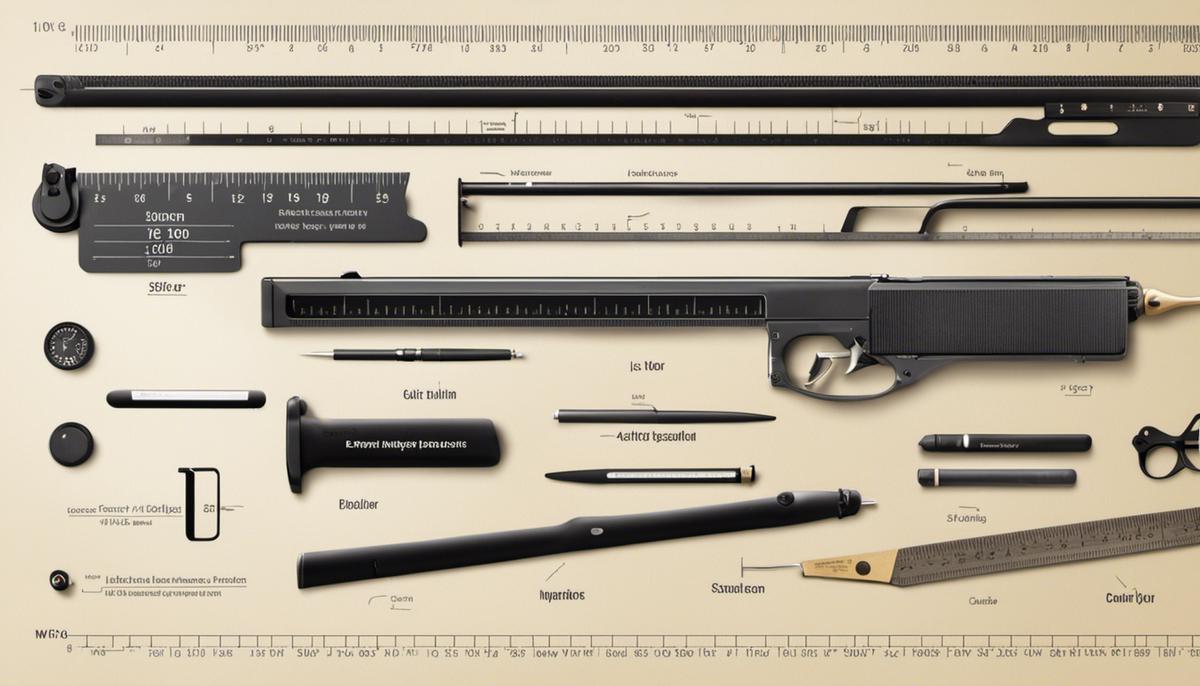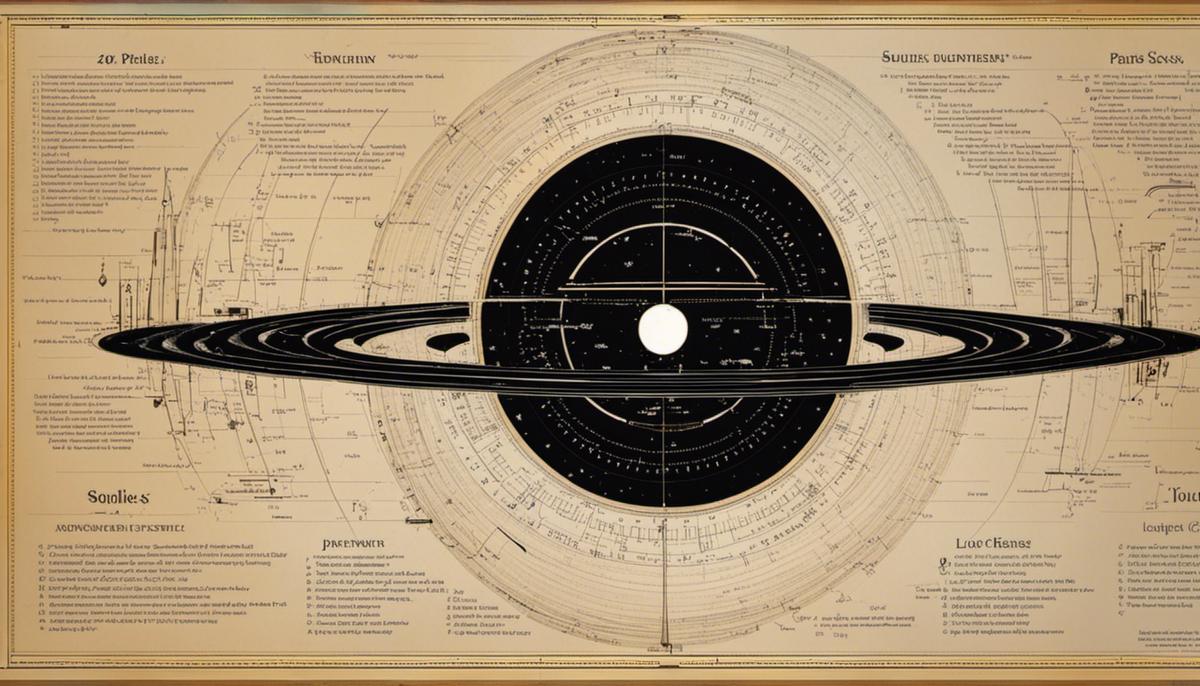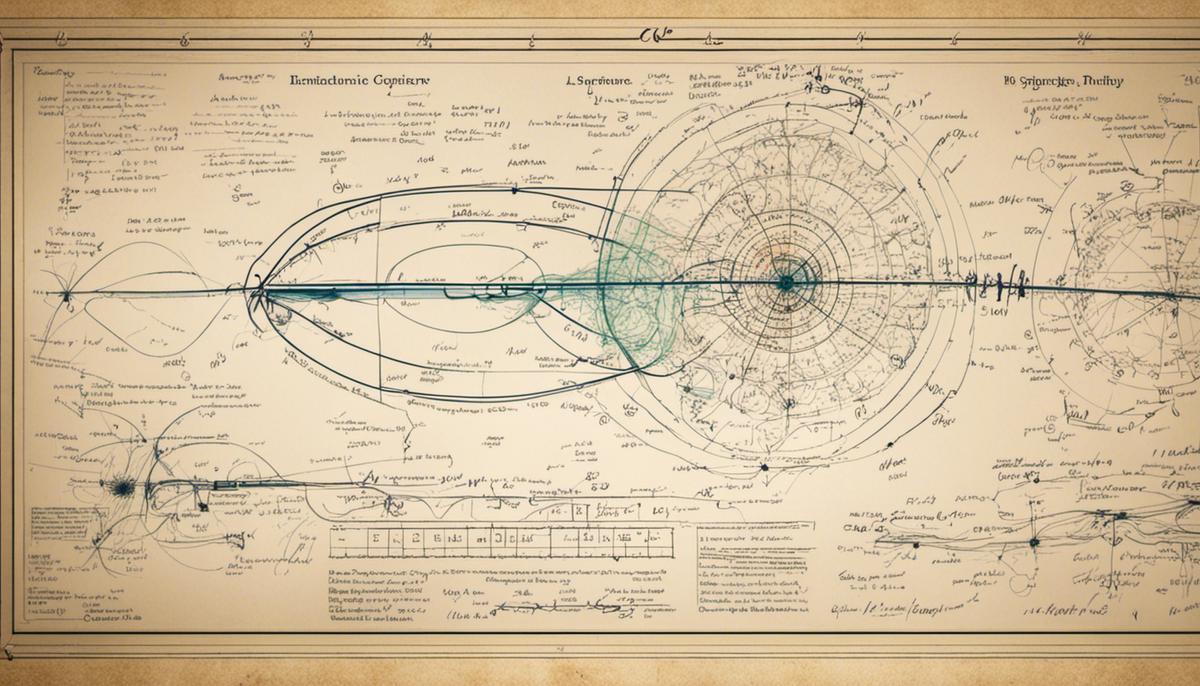Whether you realize it or not, units of measurement play an integral part of your daily life, they underpin our basic understanding of the world and cosmos around us. Used to quantify physical properties, like force of weight, length, and basic elements of heat and time, units of measurement provides standard for scientists globally. This standard allows for collaboration and clear communication amongst the international scientific community, facilitating advancements in scientific knowledge. From the fundamental units used in the metric system to the complex scientific notations and significant numbers, embarking on this exploration of the critical measurement units applied in science, will enable you to conceive the vast cosmos and minute particles with enhanced clarity and comprehension.
Basic Units in the Metric System
Basic Units of Measurement in the Metric System
The metric system of measurement, known formally as the International System of Units (SI), is a global standard for scientific and everyday measurements. It incorporates standard units for different quantities such as length, mass, and volume. Importantly, these units are decimal-based, which allows for easy conversion and calculation.
The unit of length in the metric system is the meter (m).
In scientific work, distances are often measured in meters. The key advantage of the meter is its universal acceptance and its decimal-based subunits such as the centimeter (cm; 1/100th of a meter) and the millimeter (mm; 1/1000th of a meter). There are also larger units such as the kilometer (km; 1000 meters), used for measuring greater distances.
For mass, the basic unit in the metric system is the kilogram (kg).
Lesser masses are often recorded in grams (g; 1/1000th of a kilogram) and milligrams (mg; 1/1000th of a gram). Larger masses may be measured in metric tons (t; 1000 kilograms).
The metric unit for volume is the liter (L).
The smaller volumes – typical in scientific applications – can be expressed in milliliters (mL; 1/1000th of a liter) or even in microliters (µL; 1/1,000,000th of a liter). For larger volumes, the unit cubic meter (m³) is used.
Metric System Prefixes
Metric units employ specific prefixes to indicate multiples or submultiples of the base unit. Some commonly used prefixes include:
- “Kilo-” (k) which represents 1000 (e.g., kilogram, kilometer)
- “Centi-” (c) for 1/100 (e.g., centimeter)
- “Milli-” (m) meaning 1/1000 (e.g., milligram, milliliter)
- “Micro-” (µ) indicating 1/1,000,000 (e.g., micrometer, microliter)
The Crucial Role of the Metric System in Scientific Measurements
Science greatly benefits from the global standardization and easy conversion properties of the metric system. Its uniformity permits seamless collaboration among scientists worldwide, eradicating conversion issues. Furthermore, the metric system’s unit derivation is intrinsically aligned with the universe’s fundamental physical properties, enhancing the universal consistency and acceptance of these measurements.

Temperature Measurement: Celsius, Fahrenheit & Kelvin
Integrating Celsius, Fahrenheit, and Kelvin in Scientific Experiments
Temperature in the scientific world is principally measured in Celsius, Fahrenheit, and Kelvin. Each of these systems has its own unique historical background, applications, and conversion methods.
The Celsius scale, introduced by Swedish astronomer Andres Celsius, is globally accepted for customary temperature measurements. Similar to other metric units, it operates on base 10. On this scale, water freezes at 0 degrees and boils at 100 degrees under standard atmospheric conditions. The Celsius scale is frequently used in everyday situations in addition to scientific investigations that do not demand excessive precision.
The Fahrenheit scale was devised by Polish-German physicist, Daniel Gabriel Fahrenheit. It designates 32 degrees as the freezing point of water, and 212 degrees as the boiling point. While the scale is predominantly used in the United States and its territories, it is also favored for weather forecasts due to its wide range of distinguishable degrees, which accurately capture typical weather variations. Despite the semblance of inconsistency in its scale, it suffices for non-precise scientific measurements.
The Kelvin scale owes its name to the Scottish engineer and physicist Lord Kelvin. It holds a unique position as the official SI unit for temperature and is prevalent in myriad scientific applications. The Kelvin scale commences at absolute zero (0K), the theoretical point where thermal motion halts. Each Kelvin unit mirrors a Celsius degree, rendering the water’s freezing and boiling points as 273.15K and 373.15K respectively. Owing to its degree-less measure, the Kelvin scale is an absolute scale, and therefore, considered more scientifically accurate among the three temperature scales.
Understanding Temperature Scales
Temperature is a pivotal measurement in science and comes in three common scales: Celsius, Fahrenheit, and Kelvin. Converting between these scales uses straightforward mathematics. To change Celsius to Fahrenheit, simply multiply the Celsius temperature by 1.8 and add 32. Converting back, i.e., Fahrenheit to Celsius, involves subtracting 32 from the Fahrenheit temperature and subsequently dividing the result by 1.8.
In relation to Kelvin, converting from or to Celsius is straightforward. Simply add 273.15 to shift Celsius to Kelvin or subtract the same amount to reverse the conversion.
Fahrenheit to Kelvin, however, requires a two-step process: convert Fahrenheit to Celsius first, then shift the Celsius figure to Kelvin. Reconversion, which is Kelvin to Fahrenheit, follows the same principle but in reverse.

Time Measurements in Science
Grasping the Role of Time in Science
Another fundamental unit measurement in science is time – a vital tool in chronologically ordering events, comparing their durations, and gauging intervals between them. It is a universal measurement, relevant in all scientific fields: from studying minute particles in quantum physics to observing events in the expanses of astronomy.
The basic unit of time, the second, is based on the consistent vibrations of caesium atoms in atomic clocks. It’s this precision that permits time measurement accuracy, which is vital in numerous scientific experiments. For instance, in physics, accurate time measurements are vital to calculate speed – where speed is the ratio of distance covered to time taken.
From Seconds to Years: Various Time Units
While a second is the basic scientific unit, time can be measured in other units depending on the scale of the event or phenomenon under study. For instance, minutes and hours are commonly used in our daily lives while days, weeks, months, and years are used in astronomy to record and predict astronomical events. Even larger units like centuries and millennia are used in geology and archaeology to describe long-term changes.
Time Measurements Used in Various Sciences
In the field of physics, time is central to concepts such as velocity and acceleration, as these are measured in terms of change per unit time. High-speed phenomena, such as light phenomena, are usually measured in nanoseconds or picoseconds – units much smaller than a second.
In biology, time measurements are crucial for understanding life cycles, generation times, and biological rhythms. Often, the units of measurement here would range from seconds, for processes like nerve impulses, to years, for processes like animal ageing.
In geology, large time units like million years (Myr) or billion years (Gyr) are common. These measurements help describe the timeline of earth’s history, including the formation of continents and the evolution of life.
In astronomy, time measurements are used to study processes from the rotation of planets to the lifespan of stars, often necessitating units ranging from hours to billions of years.
Role of Time in Observations and Experiments
Accurate time measurement is a prerequisite for many scientific experiments. For instance, time-lapse photography in biology can track plant growth or animal behavior, requiring precise and consistent time intervals. In physics experiments, time measurements combined with distance measurements can yield speed, while further differentiation can result in acceleration.
In astronomy, time measurements can reveal events like stellar rotations and orbital periods. Cosmologists even measure the age of the universe in terms of time (around 13.8 billion years).
Summary
Time is a critical and multifaceted unit of measurement in science. Its precise calculation and application are integral to our comprehension of the world and the cosmos beyond.

Physics and Astronomy: Units of Energy, Force, and Distance
The Importance of Understanding Joules: A Unit of Energy
In the International System of Units (SI), the Joule is recognized as the standard unit of work or energy. This unit is equivalent to the energy transferred to an object when a one newton force acts on it, causing it to move a distance of one meter. Similarly, you could envision one Joule as being the result of a one-newton force propelling an object over a span of one meter. This unit was named after James Prescott Joule, an English physicist who introduced the concept during the mid-nineteenth century. His work was instrumental in establishing the First Law of Thermodynamics. Recognizing energy in Joules is essential in various scientific and engineering disciplines, including physics, chemistry, electricity, and heat.
Newton: The Unit Measure for Force
The unit of force in SI is the newton, symbolized by N. It’s named after the eminent scientist Sir Isaac Newton, who formulated the Laws of Motion. One newton is defined as the force necessary to provide a mass of one kilogram with an acceleration of one meter per second per second. Mathematically, 1N = 1kg*m/s^2. This unit is essential in understanding and analyzing any phenomenon that involves force, from simple everyday actions to complex systems in engineering and physics. An object’s weight, for instance, is the result of the force of gravity acting on its mass, calculated in newtons.
Light Years and Parsecs: Measuring Astronomical Distances
A light-year is a unit of astronomical distance equivalent to the distance that light travels in one year, which is about 9 trillion kilometers or 6 trillion miles. This massive distance helps scientist measure the vast distances between stars and galaxies in the universe, and it derives from the speed of light, which is a constant at approximately 300,000 kilometers per second.
A parsec (pc) is another unit of measurement used to express distances to astronomical objects in the Milky Way galaxy and beyond. It’s equivalent to approximately 3.26 light years, or about 19 trillion miles. The term “parsec” is a contraction of “parallax of one second,” referring to a method of measuring distances to nearby stars. The parallax method observes a star from two different points in Earth’s orbit around the Sun, then applies simple geometry to calculate the distance. In terms of astronomical distances, these units have revolutionized our understanding of the universe’s vastness and its countless celestial bodies.
Comprehending advanced units of measurement such as joules, newtons, light-years, and parsecs opens up our understanding of the physical world and beyond. These units help put a numerical value to concepts that may be difficult to grasp otherwise, hence laying the foundation for progress in science and technology.

Scientific Notation and Significant Numbers
Mastering Scientific Notations
Scientific notation is employed to express significantly large or small numbers that would otherwise be difficult to write in full. This numerical expression consists of two key components: a coefficient and a power of 10. The coefficient is generally a number between 1 and 10, while the power of 10 dictates the movement of the decimal point. To illustrate, consider the distance from Earth to the Sun, approximately 93,000,000 miles. With scientific notation, the distance is conveniently written as 9.3 x 10^7 miles.
Using this method simplifies calculations and maintains precision during scientific measurements which often span across various scales. In any scientific research, precise and accurate measurement of phenomenons is paramount. And it is here that applying appropriate units of measurement and representing those in a universally comprehensible, standardized format becomes essential.
Significance of Significant Figures
Significant figures are another crucial aspect of scientific measurements. They involve the digits in a number that carry meaningful information about its precision. The rule for identifying significant figures states that all non-zero numbers are significant, zeroes between non-zero numbers are significant, and any zeros to the right of both the decimal point and a non-zero number are significant as well.
Accuracy becomes crucial when working with measurements. For example, if two scientists measure the same quantity and express the result in different units with differing numbers of significant figures, their results will not be equivalent without proper conversion. Maintaining uniformity in significant figures ensures that scientific data remains consistent and provides a reliable level of precision.
Combining Scientific Notation and Significant Figures
Combining the concepts of scientific notation and significant figures allows scientists to express and compare measurements accurately and conveniently. In scientific notation, the number of significant figures is reflected in the coefficient. For instance, the number 300 has two significant figures and can be expressed as 3 x 10^2, whereas the number 300.0 has four significant figures and can be written as 3.000 x 10^2.
There’s an immense scale of measurements in science. From the tiny mass of an electron (9.10938356 x 10^-31 kilograms) to the colossal distance of a light-year (9.461 x 10^12 kilometers), using scientific notation and significant figures allows scientists – and anyone interested in understanding the natural world – to work with these figures in a manageable and accurate way.

Having ventured through the breadth and depth of science’s quintessential units of measurement, from the common metric system to the realm of physics and astronomy, and the nuance of scientific notations and significant numbers, one can appreciate the complexity and precision inherent in scientific endeavors. Our ability to measure and quantify the world and universe around us, from the minutiae of quantum particles to the vast, endless expanse of space, is a testament to human ingenuity. Understanding these units is not only essential for scientific discipline but also enriches our perception and appreciation of the intricate workings of the world. With these foundational stones, we deepen our understanding, and thus, we spring forward in the eternal quest for knowledge.
